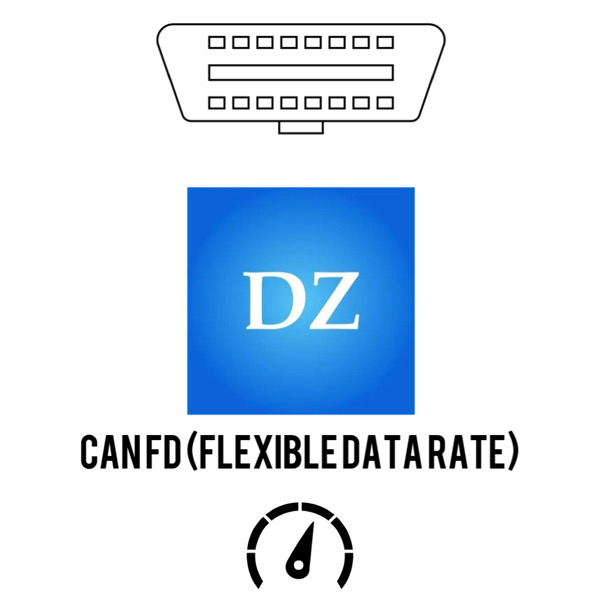CAN FD (Flexible Data Rate): The Evolution of CAN Communication in Modern Vehicles

CAN FD (Controller Area Network – Flexible Data Rate) is an enhanced version of the classic CAN protocol, designed to enable higher data transfer speeds and larger data capacity in automotive diagnostics. Developed by Bosch, this standard has become an integral part of modern vehicle architecture, especially in systems that require fast data exchange between Electronic Control Units (ECUs).
How Does CAN FD Work?
CAN FD retains the basic structure of the classic CAN protocol but introduces flexible transmission speeds and an extended data frame. While traditional CAN supports up to 8 bytes per message, CAN FD allows data transfer of up to 64 bytes.
The transmission speed can reach up to 8 Mbit/s, significantly improving diagnostics, software updates, and communication between modules.
Launch OBD-II adapters that support the protocol:
DBScar V, DBScar VII
ThinkDiag devices that support the protocol:
ThinkDiag 2
Ediag devices that support the protocol:
Ediag Plus, Ediag Elite


Vehicle types and brands supported by the protocol:
The latest passenger and electric vehicles produced from 2019 onward, primarily Volkswagen (MQB Evo platform), Audi, BMW, Mercedes-Benz, Toyota, Hyundai, Kia, as well as newer EV models such as Tesla, BYD, NIO, and Lucid.
Advantages of the CAN FD Protocol
- Higher data transmission speed and capacity compared to classic CAN
- Reduced diagnostic time and faster ECU programming
- Fully compatible with existing CAN systems, simplifying the transition to the new standard
- Improved efficiency and reduced communication latency
- Ideal solution for vehicles with advanced electronic systems, including ADAS and EV platforms
Disadvantages and Limitations
- Requires compatible diagnostic tools that support CAN FD
- More complex implementation and system configuration
- Not used in older vehicles – primarily reserved for newer models
- Additional software support needed for processing CAN FD messages
Use of CAN FD in Automotive Diagnostics
CAN FD is used in advanced diagnostics, ECU programming, software updates, real-time sensor monitoring, and data exchange between high-performance modules. This protocol is essential for modern vehicles with complex network structures and a high level of automation.
Conclusion
CAN FD represents the future of automotive communication. With higher speed, greater data capacity, and backward compatibility with classic CAN systems, this protocol is becoming an indispensable tool in modern diagnostics and the development of new generations of vehicles.

